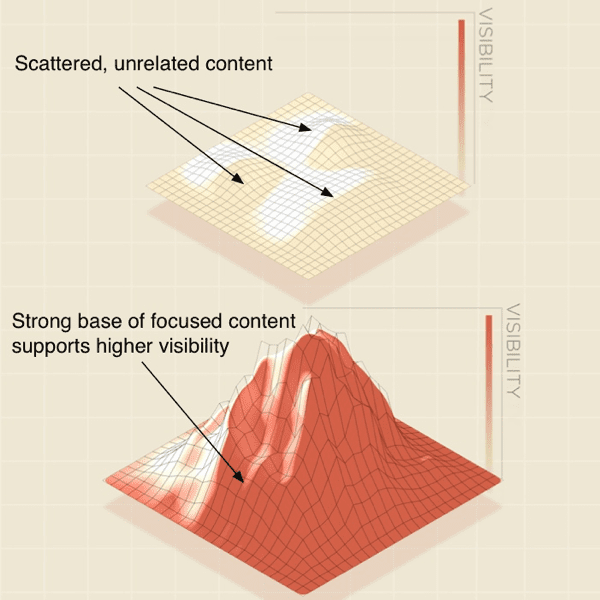For SaaS companies looking to build an effective SaaS inbound marketing program, one of the first things you are going to want to do is to create a content hub. According to Neil Patel, “a content hub is a destination where website visitors can find branded, curated, social media user-generated, or any type of content related to a topic.” Patel declares content hubs to be “branded resource centers published to help visitors find the information they seek in the form they prefer.”
The goal of a content hub is to create awareness and establish your SaaS as an authority in your industry. It positions your company as a thought leader, even if the reader hasn’t heard of your company yet.
Orbit Media defines a content hub as a “set of content usually organized around a specific topic…Content hubs are relevant to both web design and ongoing content marketing.” The company continues to say that content hubs are one of the most useful methods to generate awareness in an otherwise crowded field, but only if companies implement them the right way.

For instance, companies should not compile a large number of mediocre blog posts and topics they think are relevant to their target customers. You want your content hub to be a resource of that your target customers return to again and again, regardless of them ever doing business with your SaaS. You need to provide value and give your target audience a reason to return to your content hub.
Instead, companies will want to create a hub that includes well researched, well written, helpful, useful, and memorable content. You also want to produce content in multiple formats, (e.g. articles, infographics, podcasts, videos, etc.). You also want to have numerous assets, like white papers, e-books, cheat sheets, webinars, etc.
When creating a content hub, imagine a dartboard. Try to keep in mind that the center of your hub, or the bullseye, will be your main topic or theme for your hub. The next outer ring of the content hub will be any relevant sub-topics that educate and help your target customers accomplish the main topic or theme of the content hub. This includes content that answers “How to” type questions, as provides educational “The Top 5,” or “3 Steps to,” content. The final circle is the supportive base, which provides relevant information on a broader range of similar but unique topics. This could include things like Q&A with industry experts or industry peers, industry trends and news, as well as analysis and survey results.
A content hub, in essence, teaches your target customers how to do for themselves what your SaaS solution is designed to make easy getting done for them. You provide original content, along with curated content from 3rd party experts, that teaches your target customers, (and even current customers,) a great deal of helpful information on how to solve their problems and challenges that it just so happens your SaaS is the easiest and best solution for. So, part of what your target customers learn from your content hub includes not just how to do things for themselves, but it also teaches them just hard and time-consuming doing the work themselves is.
In the process, your target customers inevitably come to trust that your SaaS solution is well worth considering, saving them time and money to overcome their problems and challenges. Naturally, who better to provide the solution for you than the company that taught you how to do it for yourself? This positions your SaaS as a natural solution that people are more than willing to pay for.
In the process, this will surface those that are willing to pay for your service. Those that have more money than time to do it themselves. And those that have more time than money and decide to use the helpful information you have provided to do it themselves will have success from your help and eventually get to the point where they have more money than time and will come back to you and pay for your SaaS to do what they know you can do for them to free up their time. So either way, you solve for businesses problems and pain points and attract your ideal customers.
If you create a content hub that’s a resource for target customers to come back to, over and over again, in the process they will become very open to learning about how your SaaS can solve for their challenges.
Embed This Image On Your Site (copy code below):












